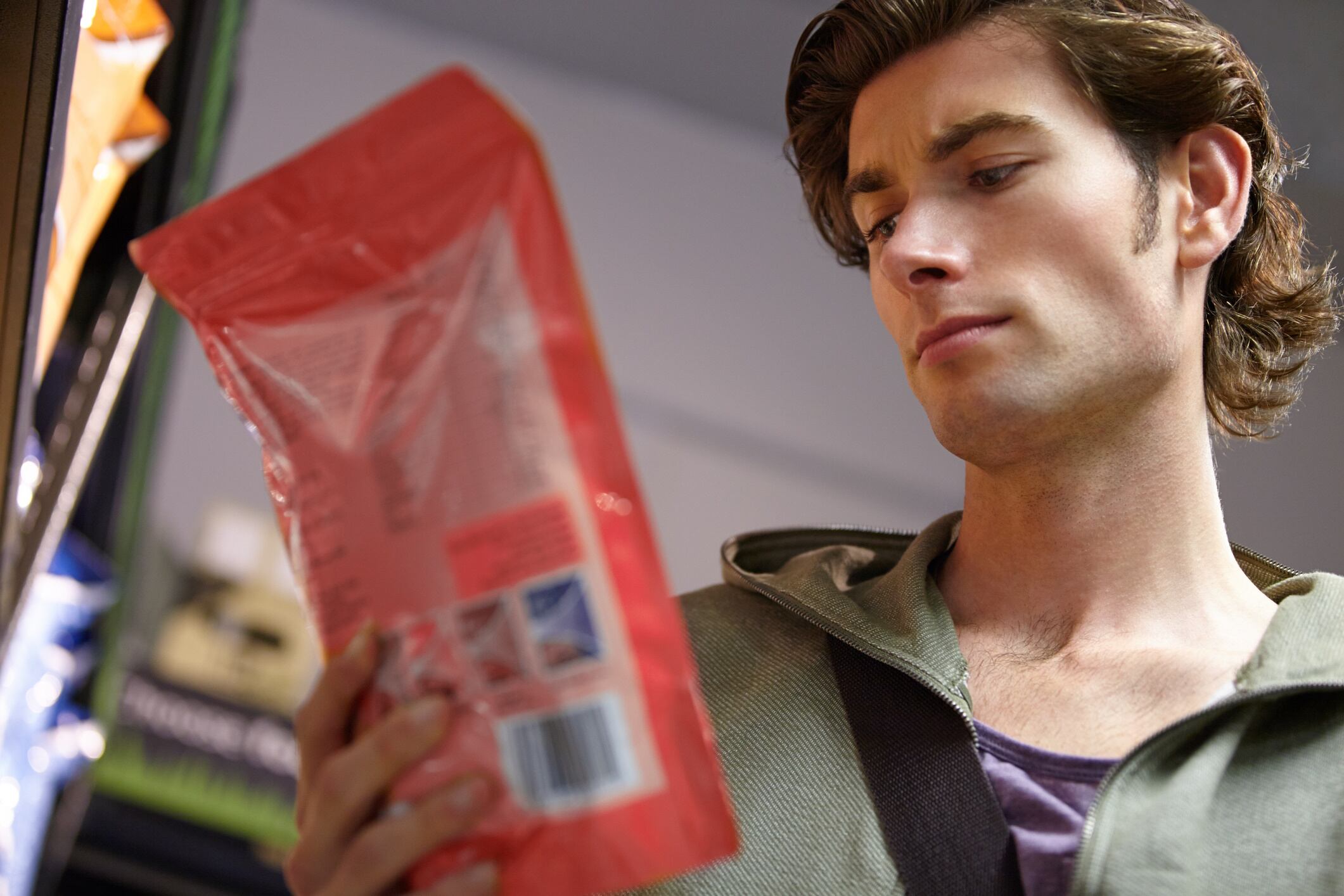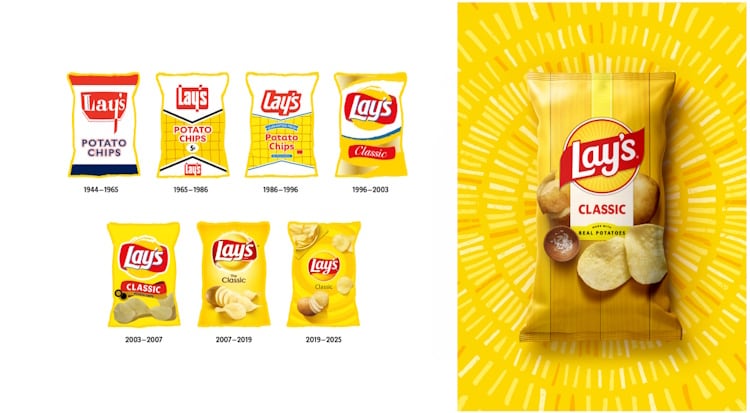Key takeaways:
- A surprising number of consumers don’t realize potato chips are made from actual potatoes.
- Snack and bakery brands are urgently rebranding to rebuild trust and spotlight real ingredients.
- Years of flashy marketing and vague labels have left many consumers disconnected from the basics of what they’re eating.
Lay’s just pulled off the biggest makeover in its nearly 100-year history – not for a bold new flavor or packaging stunt, but because a stunning number of consumers missed the obvious. According to Lay’s own research, only 42% of people knew their chips were made from real, farm-grown potatoes. That’s right – not potato powder, not some extruded chip-adjacent starch snack. Actual potatoes.
In a world where brands shout about being plant-based, gluten-free, high in protein or gut-friendly, it’s kind of hilarious (and also worrying) that something as basic as a potato chip needed a back-to-basics explainer. Lay’s responded by rolling out a full brand redesign – matte-textured bags, a warmer logo, earthy tones and the proud new tagline: ‘Made with Real Potatoes’. It’s not subtle and that’s exactly the point. Turns out, hinting just doesn’t cut through anymore.
This isn’t just a Lay’s issue. Brands across the globe are on a mission to prove their food is still, well, food and not something whipped up in a flavor lab. Why? Because trust has taken a beating and customers are starting to ask tougher questions.
Welcome to the age of ingredient anxiety

Everywhere you look – especially in the bakery and snacks sectors – brands are reaching for their roots. They’re rewriting labels, cleaning up ingredient lists and clinging to the word ‘real’ like it’s their last shot at rebuilding trust. And honestly? They kind of have to.
Take PepsiCo. Beyond Lay’s, it’s scrubbing artificial flavors and colors from all its major US snack brands by the end of 2025. The Lay’s Baked range now touts olive oil; Kettle Cooked versions are getting an avocado oil glow-up. It’s not just an oil switch – it’s signaling: ‘Hey, we see you reading the label. We’re trying here.’
Tostitos, also under the PepsiCo umbrella, is shifting its messaging toward authentic ingredients – spotlighting the simplicity of corn, lime and salt. And Doritos? The brand quietly removed artificial dyes from its top-selling products last year, leaning into paprika extract and turmeric instead of the usual neon suspects.
Then there’s Kind Snacks, which built its brand on transparency. Its signature move? Putting the ingredient list literally on the front of the bar. RXBAR does the same, listing what’s in the bar in bold type: ‘3 Egg Whites. 6 Almonds. 2 Dates. No B.S.’ It’s confidence in snack form.
In the bakery world, Grupo Bimbo has been making noise, too. The world’s biggest baking company is putting sustainability and simplicity in the spotlight – think locally sourced wheat, shorter ingredient lists and regenerative farming. Its Vital line in Europe is going all in on whole grains and recognizable pantry staples.
Even nostalgic brands are pivoting. Little Debbie has launched Mini Muffin Made Right, a cleaner-label line with no high fructose corn syrup or artificial flavors. Hostess, too, has tested a ‘bakery-fresh’ sub-brand aimed squarely at label-conscious millennials who still want a cupcake with their coffee but don’t want it to feel like a chemistry experiment.
Across Asia, Calbee’s Simple range strips back to just three ingredients for its flagship chips – potato, salt, oil – and shouts about it in minimalist packaging. Over in the UK, Walkers (Lay’s sister brand) has run origin-focused campaigns showing which British farms their spuds came from, complete with farm names printed on packs.
And for a quirky twist: in France, Bonne Maman now sells madeleines in compostable wrappers and uses just five ingredients you’d actually find in your kitchen. Real sugar, real butter, real eggs. A marketing novelty in 2025? Somehow, yes.
Chocolate milk, brown cows and other modern mysteries

Look, the Lay’s finding might seem ridiculous, but it’s not a total fluke. A 2017 survey by the Innovation Center for US Dairy found that 7% of American adults thought chocolate milk came from brown cows. That’s about 16 million people. One in five didn’t know burgers come from beef. In schools, more than half of urban Californian students couldn’t identify pickles as cucumbers or cheese as dairy.
We’re not dumb – we’re just distant. Generations of consumers have grown up with less connection to farms, ingredients and food prep. We don’t churn butter. We don’t can tomatoes. We microwave meals with ‘cheese-like sauce’ and throw snack packs into lunchboxes without blinking. Somewhere along the way, the story of our food stopped being told.
Add to that a deluge of buzzy packaging language – keto-friendly, high-protein, gut-healthy, sugar-free, low-FODMAP – and it’s no wonder people glaze over. Words like ‘natural’ have become completely unmoored from meaning. A third of shoppers think it means organic. Many assume it also means no additives, no GMOs and probably hand-picked by someone wearing a straw hat.
And don’t even start on front-of-pack labeling. Nutri-Score, traffic lights and sugar warnings might help with nutrition goals, but they don’t help people understand what they’re actually eating. A red warning on a bag of chips doesn’t explain that it’s still just a sliced, fried potato. It just yells ‘bad’ in bold.
Marketing gave us flavor waves – and amnesia

Let’s be honest, the food industry hasn’t helped itself. For decades, it sold the sizzle, not the steak. Think bright packaging, cartoon mascots, flavor explosions and ‘Xtreme’ crunch. Nobody was bragging about their wheat supplier or proudly displaying their eggs. Branding was all about vibes, not ingredients.
Lay’s classic design is a perfect example: a stylized yellow sunburst, a swoosh of red ribbon and chips levitating in a flavor haze. The word ‘potato’ might have been there, but it sure wasn’t the star.
Now that customers are asking for receipts, the industry’s trying to pivot. Brands are suddenly obsessed with showing their sourcing: whether that’s a QR code that leads to a farmer’s story or imagery of golden potatoes basking in the sun. Lay’s now proudly features real potato images on every bag and even the oil choice gets a shoutout.
It’s storytelling, sure. But it’s also course correction. After decades of branding that turned breakfast cereals and snacks into cartoonish artifacts, consumers want to believe there’s something real inside the bag.
Bakery is seeing the same shift. Biscuit brands are dropping artificial vanilla for Madagascar extract and telling you exactly where it comes from. Flatbread makers are highlighting traditional stone ovens. Even supermarket cupcakes are boasting about using cage-free eggs. Ingredient literacy is trending and brands know it.
Can trust be repackaged?

All this realness may sound obvious, even a bit silly. But it’s serious business. Economic pressure, wellness trends and a very online generation of shoppers have changed the game. If you don’t know – or trust – what’s in the food, you’re more likely to put it back on the shelf.
And that’s a scary prospect for legacy brands. Clean label is no longer a niche perk. It’s table stakes. If you’re not showing your cards – what’s in it, where it came from and why it matters – consumers will move on.
The Lay’s rebrand might seem over the top, but it’s a cautionary tale. If more than half your customers don’t know your signature product is made from the thing it’s named after, something’s broken. But maybe it’s fixable. Maybe this is the start of a better conversation – one that doesn’t require a magnifying glass to figure out what you’re eating.
Because no one should need reminding that a potato chip is made from a potato. But apparently, we do. And until we all get back on the same page, expect more brands to start putting the obvious front and center – loudly, proudly and maybe even in all caps.
(Oh, and for the record – chocolate milk? Definitely not from brown cows.)





